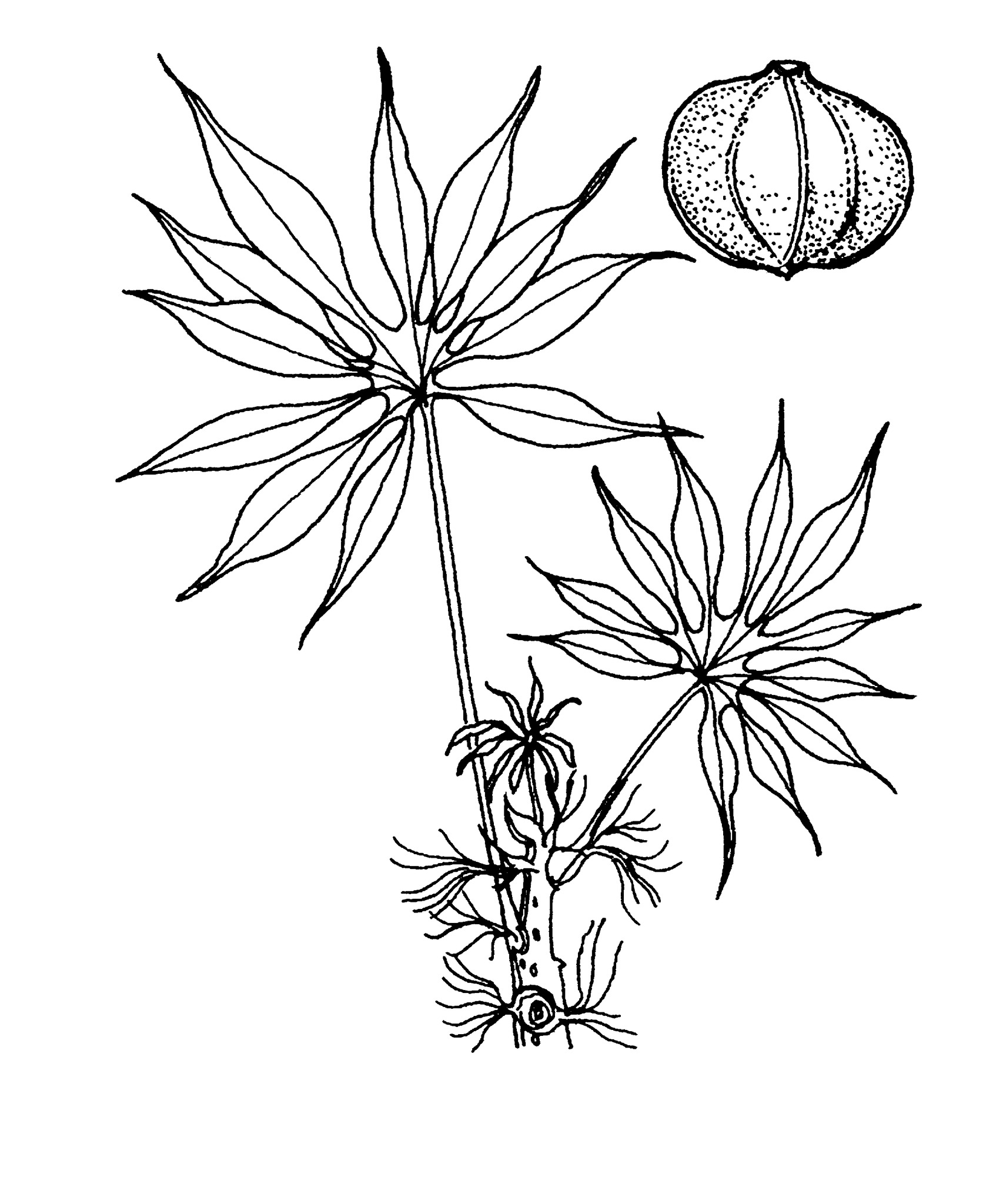
From the Greek iatros — a physician, and trophe — food, alluding to the medicinal use of some species.
Shrubs or trees, evergreen or deciduous, perennial, male and female flowers on the same plant or rarely on separate plants; stems and foliage with colourless latex. Indumentum of simple, multicellular hairs, often glandular, stinging hairs sometimes present. Stipules, soon shed. Leaves alternate, stalked to stalkless, lobed, palminerved, glands present at blade base; margins entire or scalloped to saw-toothed. Inflorescences terminal or axillary, paniculate, solitary, usually bisexual and androgynous, with flowers in bracted clusters. Male flowers stalkless to stalked; calyx lobes 4-6, overlapping, fused at base; petals 5, overlapping, free or variously fused; disk entire or of 5 glands; stamens 6-10, filaments partially fused into column and often arranged in 2 whorls with those in outer whorl opposite the petals. Female flowers stalkless to stalked; calyx lobes 4-6, overlapping, fused at base; petals 5, overlapping, free or variously fused; disk entire or of free glands; ovary 1-5-chambered, ovules 1 per chamber; styles 3, shortly fused at base, simple or divided into 2. Fruits capsular, dehiscent, 3-lobed, surface smooth. Seeds ovoid or oblong; carunculate, non-arilloid.
About 170 species in Africa and the New World; 3 species are naturalised in tropical Australia. 5 species are commonly cultivated, but usually only in subtropical parts.
Seeds or cuttings. None of the species listed will tolerate frost.
Stems with colourless latex; leaves alternate, lobed, palminerved, glands present at blade base.
Dehgan & Webster (1979), Dehgan & Schutzman (1994), Rodriguez (1992).
Source: (2002). Euphorbiaceae. In: . Horticultural Flora of South-eastern Australia. Volume 3. Flowering plants. Dicotyledons. Part 2. The identification of garden and cultivated plants. University of New South Wales Press.
